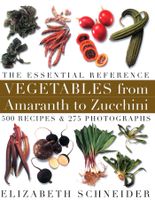🔥 Try our grilling cookbooks and save 25% on ckbk membership with code BBQ25 🔥
Chinese Celery
Apium graveolens var. secalinum

Published 2001
Also
cutting celery ,leaf celery ,soup celery smallage ;qin cai and kan tsai (Chinese)
There are three distinct forms of cultivated celery (Apium graveolens), although there is disagreement about their scientific names. The crunchy, thick-stalked form (usually called the dulce variety) is most common in North America. The gnarly-bulbed celery root, rapaceum is a second form. The slender-stalked, leafy type pictured here is the form closest to wild celery.
As is often the case, Joy Larkcom sums up the basics in her invaluable Oriental Vegetables, making a further distinction between Chinese and cutting celeries. “Chinese celery probably evolved from a wild form of Asian celery. It bears a remarkable resemblance to the ‘leaf,’ ‘green,’ ‘cutting,’ or ‘soup’ celery still grown in Europe as a herb—itself not far removed from the wild European celery. Both are hardier and generally more robust than the long-stemmed trench celery and self-blanching celery, which have usurped them as table vegetables in Europe and America.” It is curious that the old form of celery should be maintained in America only as “Chinese celery,” but in any case, unless you grow it yourself, you can now find it exclusively in Oriental markets, as far as I can determine.
Become a Premium Member to access this page
Unlimited, ad-free access to hundreds of the world’s best cookbooks
Over 160,000 recipes with thousands more added every month
Recommended by leading chefs and food writers
Powerful search filters to match your tastes
Create collections and add reviews or private notes to any recipe
Swipe to browse each cookbook from cover-to-cover
Manage your subscription via the My Membership page
In this section
Part of
Advertisement
Related Recipes
-
-
-
-
Related Reference
-
-
-
-
Advertisement



